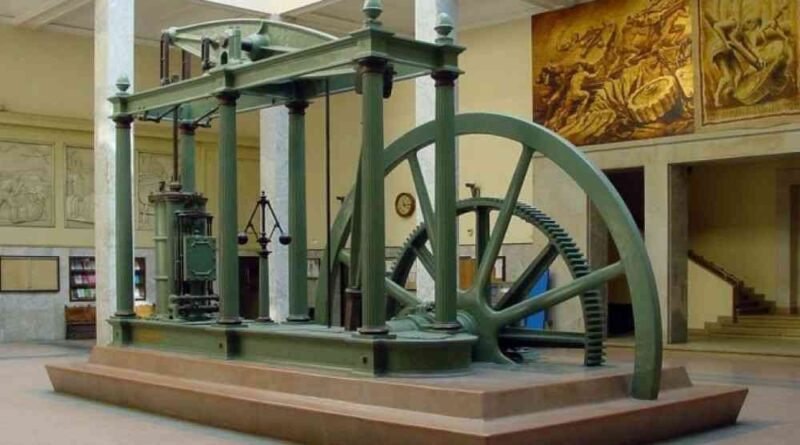How James Watt Steam Engine Invented
When water is heated at boiling temperature, it evaporated from liquid into a water vapor we called steam. Steam is more powerful than water as when water is heated in a boiler, it begins to absorb energy. Steam can hold five or six times as much potential energy as an equivalent mass of water.
A steam engine uses the steam by which a force produced by steam pressure used to perform mechanical work.
What is Steam Engine?
A steam engine is a device that converts the energy stored in steam into mechanical work. Steam engine is a heat engine that performs mechanical work using steam as its working fluid. The steam engine uses the force produced by steam pressure to push a piston and perform mechanical work.
A steam engine is a machine which uses heat and steam pressure to create mechanical motion to perform various mechanical work. The steam engine was the first machine capable of converting thermal energy to mechanical energy while being convenient and practical.
Invention of Steam Engine:
The first commercial steam-powered device was a water pump, developed in 1698 by Thomas Savery, an English engineer and an inventor. He invented the first commercially used steam powered device, a steam pump also called as the “Savery engine”.
The first commercially successful engine that could transmit continuous power to a machine was the atmospheric engine, invented by Thomas Newcomen in the year 1712. Thomas Newcomen was an English inventor who created the atmospheric engine, the first practical fuel-burning engine.
Early steam engines were part of a pump used for clearing water from mine shafts, and the design was notable for using a piston. This steam engines faced significant inefficiencies, often wasting steam and energy.
James Watt recognizes the limitations and enhanced the design by solution with the separate condenser, which avoided this waste of energy and radically improved the power, efficiency, and cost-effectiveness of steam engines.
James Watt a Scottish inventor and mechanical engineer who improved the first commercial successful Newcomen steam engine with a separate condenser in 1776. Watt’s steam engine transformed a simple machine into an efficient powerhouse, driving the engines of progress.
Watt’s design allowed the steam to be condensed separately from the main cylinder, reducing heat loss and significantly improving efficiency. This innovation was a game-changer and a revolution for the world.
Watt introduced the concept of converting reciprocating motion to rotary motion. By adding a crank and a parallel motion linkage, Watt’s engine could produce continuous rotary motion a crucial advancement for various industrial applications.
Key Components and Working Principles:
Here are some of the key components and working principles of a steam engine are as follows,
- Boiler: The boiler is a vessel where water is heated to produce the steam. Heat is generated by burning coal, wood, or other fuels. The generated steam is under high pressure.
- Steam: Steam is the generated after boiling water produced in the boiler. It is the most important part of steam engine carries the energy needed to drive the piston.
- Piston: The piston is a cylindrical component that moves back and forth within a cylinder. It is typically sealed to prevent steam leakage. The movement of the piston used to drive mechanical work of the engine.
- Cylinder: The cylinder is a chamber where the piston moves. As steam is introduced into the cylinder, it pushes the piston in one direction.
- Valve Mechanism: The valve mechanism controls the flow of steam into and out of the cylinder.
- Connecting Rod: The connecting rod is connecting the piston to the crankshaft. As the piston moves back and forth, it drives the rotation of the crankshaft.
- Flywheel: The flywheel is used to store mechanical energy and smooth out fluctuations in the engine’s power output.
The watt’s steam engine became an industrial revolution, powering industries, factories, mills and transportation. This engine transforms the new era of transportation, innovation and productivity.
This is how the revolutionary invention of James watt steam engine transform the history.





